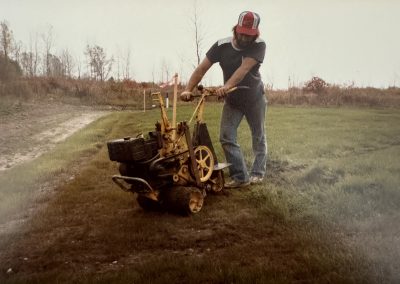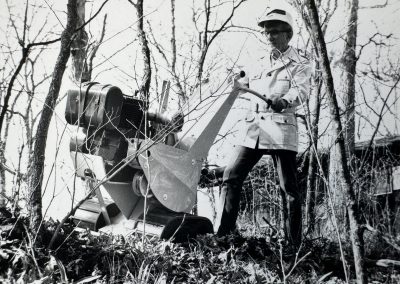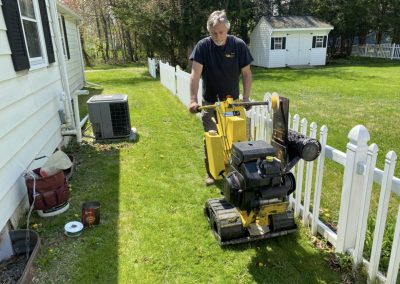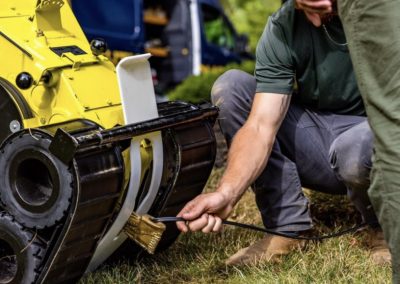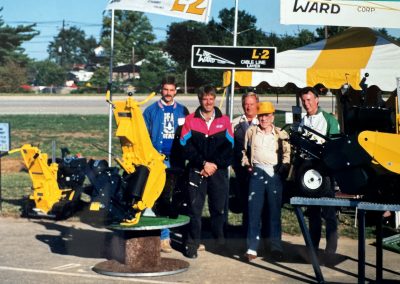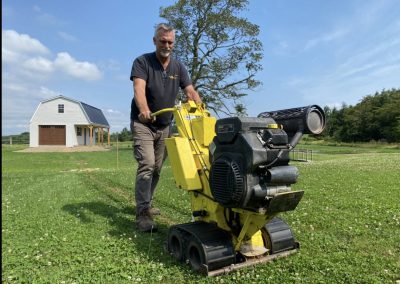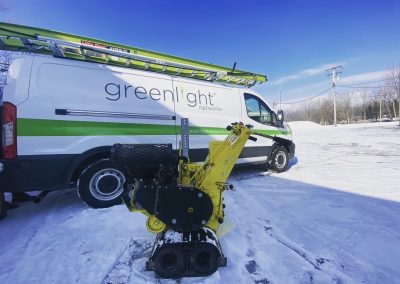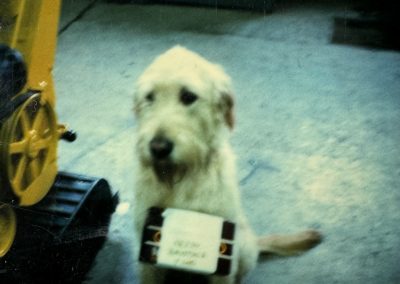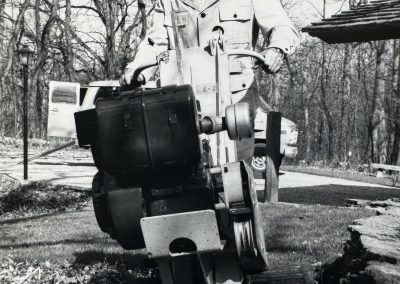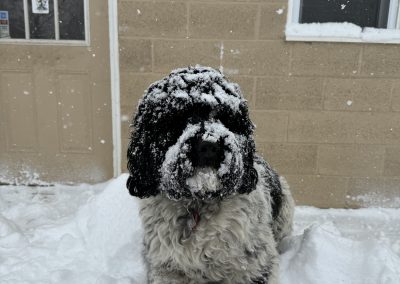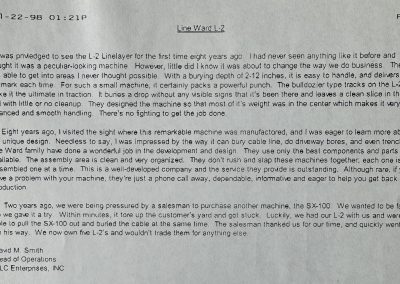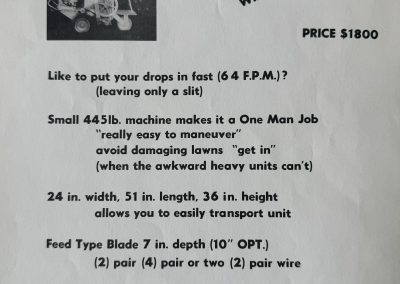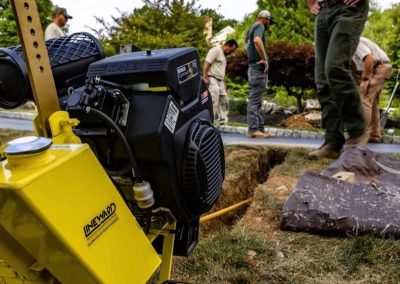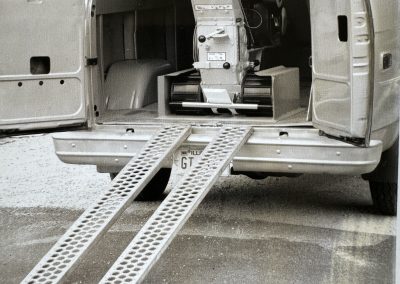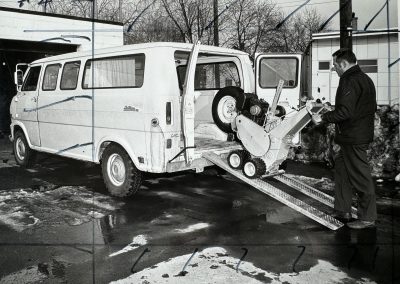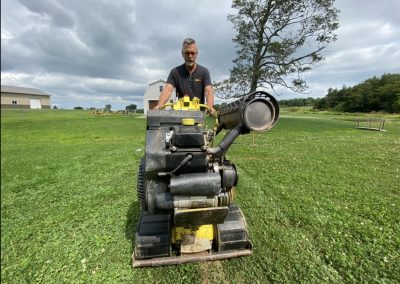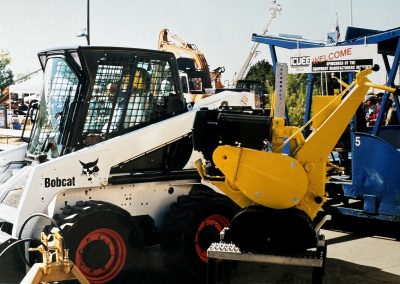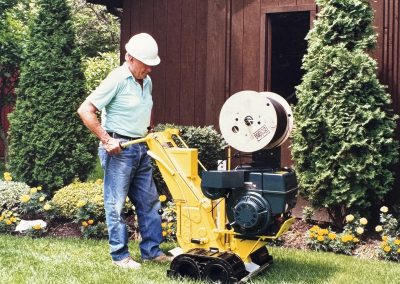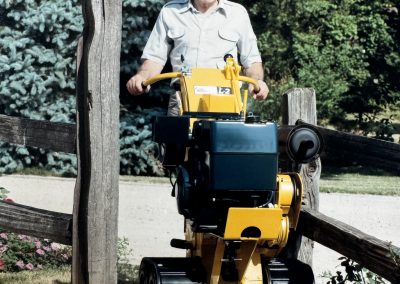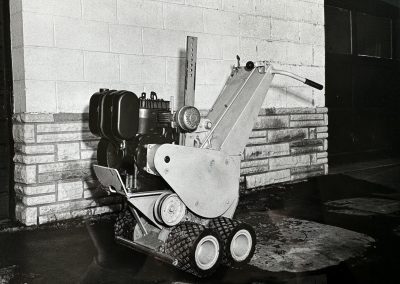Digging into the Past
Line-Ward: The Past in Pictures
It was 1961. Gene Ward was doing what he normally did running the day-to-day operation of his rental yard and heavy equipment business. One day, the telephone company approached him. They were looking for something that might dig and lay cable at the same time. “I modified a sod cutting ma-chine, redesigned it with some different gearing and powered it with an 8HP Kohler engine,” Ward said. “It was a crude version of a line layer.” Several years later, Gene and his brother Jerry combined their collective engineering and business expertise. They took a basic idea and developed a breakthrough machine. It was called the L-1. the first self-contained cable line layer. In 1972, Line-Ward Corp. was born. “The L-l was 95 percent successful the first time Jerry test ran it,” Gene said. “We knew we had a terrific product right away. With the L-1, the Ward’s had a self-contained machine to bury cable for telephones and cable television, and pull plastic or porous piping for lawn sprinkling systems. The new L-l could cut to a depth of 13-inches. That was a vast improvement over the modified sod cutter. The new machine also vibrated less and required less maintenance. It was hand assembled and designed so attachments simply snapped on.
The L-I evolved into the L-2 as Gene & Jerry continued to build off the original design. The major innovation of the L2 was a ‘range shift’ which allowed the L2 to operate at a slower track speed, allowing the blade to cut more effectively through difficult terrain. The 16HP Kohler was also upgraded to a 23HP engine which provided an even bigger punch for the compact machine. Attachments such as the boring unit and reel carrier were added, allowing the L2 to compete with a wider array of equipment. Competitors in the Line laying industry emerged as Ditch witch released the 100SX a walk behind cable plow and Vermeer released the now discontinued LM11 which essentianly tried to copy Lineward’s design.




